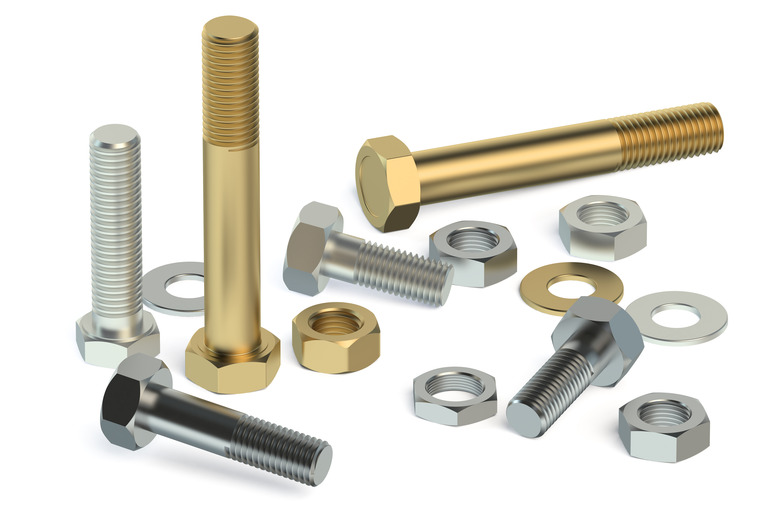How To Install A Lock Nut
Lock nuts are designed to prevent nuts from working loose. A loose nut can be caused by vibration and is common when it comes to lawnmowers, washing machines, garbage disposals and other equipment that constantly moves, shifts or even vibrates. It can also occur if a nut is not tightened enough or if it is subjected to extremes in temperature. Lock nuts are readily available at hardware stores or home improvement stores. There is also a wide array online for different needs and uses.
The most common form of a nut has a nylon inset built into one side of the threaded end. When the nut is tightened, the thread on the bolt stretches the nylon, causing the nut to grip the bolt which stops it from loosening itself.
Removing Problem Nuts
Removing Problem Nuts
Purchase a supply of the most common-sized lock nuts and matching plain washers that you will use to replace any problem nuts that have become loose over time no matter how often you try to tighten them. Remove any of the problem nuts that are prone to loosening with the correct-sized wrench. Discard them once they're off the device you were using since damaged nuts should not be used on other appliances.
Placing the New Nuts
Placing the New Nuts
Place the correct-size plain washer over the threaded end of the bolt or stud. Thread the replacement lock nut onto the bolt or stud by hand until you feel the resistance caused by the nylon insert. Tighten the lock nut firmly, turning clockwise, with the same wrench you used to remove the original nut. If the head of the bolt is accessible, use a second identical wrench to hold it in place while tightening the lock nut. If the head of the bolt isn't too small or unaccessible, you can just hold it with your fingers.
When fitting the new lock nut onto the bolt, be careful not to crossthread it. If you encounter resistance immediately, undo the nut and turn it counterclockwise until you feel the thread click into place; turn clockwise and you should be able to thread the nut by hand until you hit the nylon insert. You can remove and replace the same lock nut dozens of times without damaging it or affecting it's efficiency as a lock if it the nylon is still threaded correctly inside of the nut.
Do not force a cross-threaded lock nut with a wrench. Doing so will damage both the lock nut and the bolt or stud.
